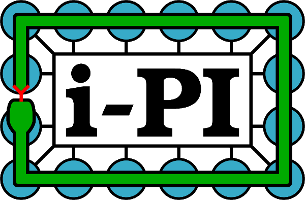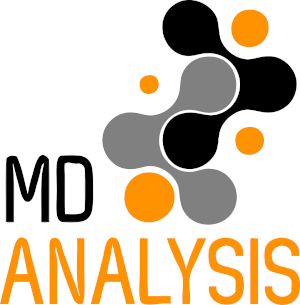Software
Here you will find the tools I use for my research. This includes the computational chemistry/physics/materials-science packages that I developed and also the commercial/open-source packages I routinely use for my research work.
Packages I develop and maintain
I developed the following three open-source packages.
1. PyEPFD

PyEPFD (code repository) stands for a Python Library for Electron-Phonon coupling from Finite Displacements.
PyEPFD provides a set of tools to compute electronic properties, such as fundamental gap, at a finite temperature where nuclear quantum effects are incorporated using harmonic approximation. For that purpose, an additional ab-initio code is required that computes the ab-initio forces and electronic properties such as eigenenergies of the bands. PyEPFD also provides tools to analyze the validity of the harmonic approximation if a Molecular Dynamics and/or Monte Carlo trajectories are available. Currently, for the ab-initio part, PyEPFD depends on Qbox code. However, it is very easy to use pyEPFD with any ab-inito code of your choice. For more information see the documentation
Acknowledgement: The development of PyEPFD is supported by the Midwest Integrated Center for Computational Materials (MICCoM)
2. LGCMC

LGCMC (code repository) is a open-source FORTRAN package for Lattice Grand Canonical Monte Carlo Simulation for ab initio prediction of pure and mixed gas isotherms.
A grand canonical Monte Carlo simulates adsorption isotherms of pure and mixture of gases within a porous material. This approach imposes the condition of material equilibrium, i.e., the chemical potential of a species is equal in both gas and adsorbed phase. Usually simulation cells containing thousands of atoms are required and these are only feasible with force fields, which are often not adequate to describe the interatomic interactions. Sometimes, refitting force field parameters using ab initio calculations improves the interatomic descriptions but yet these refitted forcefileds are limited by the form of the adopted interatomic potential. An alternative to force field fitting is to map the atomic degrees of freedom of the adsorbate surface onto a coarse-grained description of adsorption sites. Such mapping can be made to utilize accurate ab initio energies using high-level quantum chemical methods such as coupled cluster theory. After coarse-graining, a GCMC simulation can be performed on this coarse-grained model. LGCMC performs such kind of GCMC simulations on a coarse-grained model to simulate pure and mixed gas adsorption isotherms. In this way it is possible to treat adsorbate-adsorbate lateral interactions explicitely, and thus, isotherm calculations can be performed avoiding any approximations, such as mean-field approximation.
Acknowledgement: Development of LGCMC (2013-2017) was supported by International Max Planck Research School “Functional Interfaces in Physics and Chemistry” and German Science Foundation (DFG) within the priority program 1570 “Porous media”.
3. iPI-Qbox interface API

This is an open source application program interface (API) designed to couple Qbox, a first principle molecular dynamics code with i-PI, a path-integral package, using socket-based client server protocol. In an iPI—Qbox coupled simulation, i-PI moves nuclei while Qbox acts as the density-functional theory (DFT) engine that supplies forces and stress tensors from first-principles DFT calculation. iPI-Qbox interface API (code-repository) maintains constant communication between an i-PI server and several Qbox servers. These simulations are extreamely useful to simulate nuclear quantum effects from first principles.












